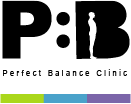Are long hours at your desk causing pain in your neck, back, or wrists? Aches from workstation issues are among the most reported health concerns in office work. The good news? Simple improvements to your desk arrangement can ease pain and improve your workflow.
We assess workstations to spot risks, improve setups, and prevent discomfort at Perfect Balance Clinic. The right changes can make your workstation a place where you work comfortably, free from pain.
How Poor Workstation Conditions Affect the Body
Bad workstation habits can turn minor aches into long-term health issues. Even minor discomfort can escalate into a serious condition if left unaddressed. The most commonly affected areas include:
1. Neck Pain and Strain
Your head’s weight can strain your neck if you frequently tilt it forward. The longer this goes on, the more likely it is to cause headaches and neck pain.
How We Help: Our experts check monitor height, screen position, and desk setup to help keep your neck in a comfortable position.
2. Back Pain and Postural Issues
Sitting in a poorly adjusted chair for long hours can wreak havoc on your spine. Sitting in an unsupportive chair can leave you feeling tense. Long hours in an unsupportive chair can raise the risk of serious back pain.
How We Help: We check workstation risks and suggest solutions for better sitting habits and back care.
3. Leg Discomfort and Circulation Issues
Sitting without shifting can put excess pressure on your lower body. Incorrect leg posture can cause tingling, discomfort, and even circulation issues.
What We Do: We check chair and desk height, foot positioning, and sitting posture to ease leg strain and improve circulation.
4. Arm, Wrist, and Shoulder Strain
Bad positioning of these tools can make work uncomfortable and tiring. Repeating the same motion in a bad position may cause long-term discomfort.
Our Solution: We examine how your keyboard and mouse are placed to help reduce tension and improve wrist support.
How to Prevent Work-Related Pain with a Workstation Assessment
A workstation risk assessment is a structured way to identify and correct poor ergonomic conditions before they lead to serious musculoskeletal issues.
At Perfect Balance Clinic, we offer professional workstation ergonomic assessments to improve posture, reduce pain, and create a healthier work environment.
1. Workstation Risk Assessment: Spotting Common Issues
A full workstation evaluation can identify key areas that need improvement. Some common problem areas include:
- Chair Adjustments – Is the height correct? Does the chair provide lumbar support?
- Monitor Positioning – Is the screen at eye level and an arm’s length away?
- Keyboard and Mouse Placement – Are they positioned correctly to prevent wrist strain?
- Desk Space and Layout – Is there enough space for comfortable movement?
- Lighting and Glare – Is poor lighting causing eye strain or headaches?
How We Help: Our specialists analyse your workstation and suggest simple, practical adjustments that can immediately reduce pain and improve comfort.
2. Workstation Self-Assessment Checklist: Simple Adjustments for Immediate Relief
For those who want to take control of their own workstation health, using a self-assessment checklist is a great way to spot and fix ergonomic issues before they escalate.
Key Questions to Ask Yourself:
- Am I sitting with my feet flat on the floor or on a footrest?
- Does my chair support my lower back properly?
- Is my screen directly in front of me at eye level?
- Are my wrists straight while typing, without strain?
- Am I taking short breaks to stretch and move?
How We Help: We provide easy-to-follow checklists and personalised recommendations to help you set up your workstation in a way that promotes comfort and productivity.
3. The Power of Movement Breaks and Postural Awareness
Staying still for hours can cause stiffness and reduce circulation. Short, frequent breaks help keep your muscles relaxed.
How We Help: We educate individuals and teams on movement strategies, including:
- Reduce digital eye stress by following the 20-20-20 technique regularly.
- Simple daily stretches can stop muscle tightness before it starts.
- Short breaks every half hour can stop your muscles from getting stiff.
Why Choose Perfect Balance Clinic for Your Workstation Assessment?
Our team ensures your workstation supports a healthy posture.
- Tailored Solutions – We provide personalised recommendations for pain relief and postural correction.
- Long-Term Benefits – Our guidance helps prevent future injuries and improve workplace efficiency.
Our flexible assessments work for both home and office setups. Good ergonomic habits lead to fewer aches and better work performance.
Take Action Today: Book Your Workstation Assessment
Desk pain isn’t normal—our experts can help improve your setup. Schedule an ergonomic assessment today for a more comfortable workday.
Final Thoughts
A poorly set-up workstation can have serious consequences for your health and productivity. Routine desk checks and expert advice help stop pain before it starts.
At Perfect Balance Clinic, we’re dedicated to helping you stay comfortable and pain-free at work. Small fixes today can keep you comfortable in the long run.





